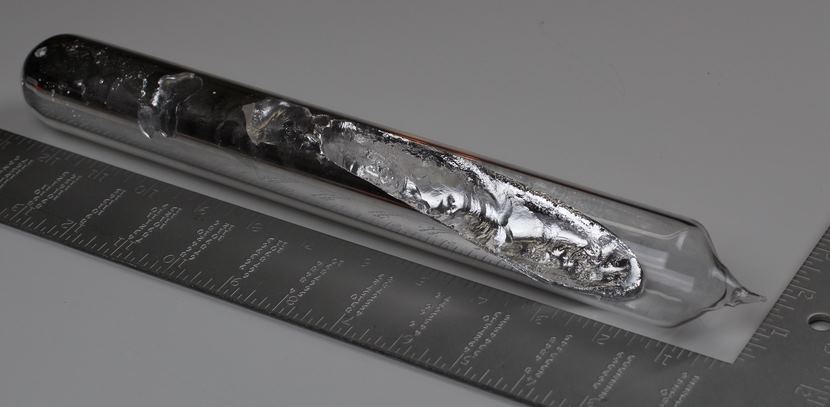Collecting chemical elements - what does it look like? (UPD. You can ask questions to the collector from the article)

Metallic sodium in a sealed ampoule
Collectors in the world - a great many. Someone collects rare butterflies, someone - caps from beer bottles, someone else - marks of the times of the USSR. All this is quite common types of collecting, because philatelists and coin collectors - a lot. But there are people who collect, for example, chemical elements, seeking to collect at home the most complete collection of elements of the periodic table.
For well-known reasons (the disintegration of some elements occurs in thousandths of a second) a complete collection of elements cannot be collected. But there are people who approached the ideal, collecting the maximum of what is possible. One of these people is Theodore Gray . By the way, he is one of the creators of Wolfram Alpha .
Gray is the author of The Elements' best-selling bestseller, a book that has sold millions of copies worldwide. The book explains how to properly collect chemical elements, including tips on finding the missing elements. All photos from this work are personal, they captured elements from the office of Gray.
')
It is worth noting that some aspects of the search for rare (and, moreover, forbidden) elements may be similar to a detective investigation. For example, if it is not possible to buy neptunium , it is worth buying a 30-year-old smoke detector that used americium . This element breaks down to neptunium. Polonium can be taken from an antistatic brush, which is used to clean vinyl records and films. But polonium will disappear here in 10 years due to complete disintegration.

Most of the elements can be obtained in a quite usual way - buy from a manufacturing company or search on e-Bay. For example, Gallium Source sells rare items to both 12-year-old kids and NASA (naturally, the sets of items for children and scientists vary in composition).
The company Metallium Inc sells ready-made sets of 76 elements, sealed in a small glass ampoule. This set is priced at $ 695.
It is clear that such a path is not for the real collector. So you can buy items step by step. The same tungsten can be bought for 8 dollars in the form of metal wire, and for $ 250 you can buy a bar of tungsten metal. The price for pure sodium ranges from 111 to 1000 dollars, depending on the amount and type of capsule where the item is stored.
Not all chemist collectors collect complete collections of items. Some stop after collecting noble gases. Others are only interested in radioactive or any "dangerous" elements.
Many collectors are upset that they will never be able to get the same ununpenty , whose half-life is only 87 ms (and this concerns a fairly stable Uup-288). The same goes for hassia, the reason is the same.
Thus, there is simply no collector in the world who has all the currently known chemical elements, and probably such a collector will never appear. But one can strive for the ideal, and some people, including Gray, are very close to such an ideal.
UPD. Theodore Gray agreed to answer the questions of Geektimes. Ask your questions in the comments, if there are any, I will translate them, and send them to Theodore.
Source: https://habr.com/ru/post/366483/
All Articles